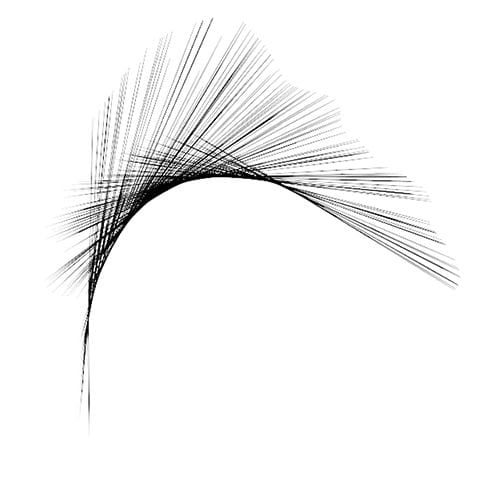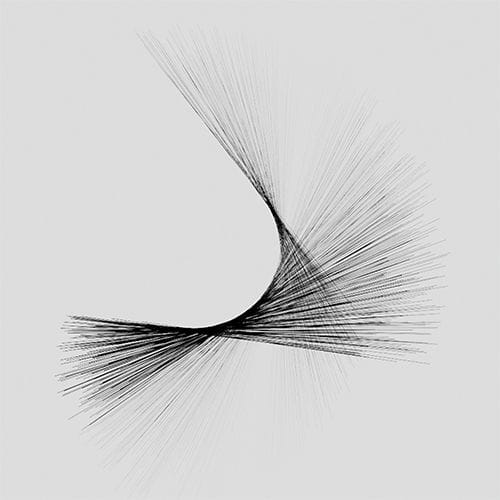You're very welcome, millsy05!
It was fun looking into your idea. Thank you very much for the feedback.
Have a great weekend as well.
I do Film - Photography, and everything 3D/4D. (RED/Cinema 4D)
I’m “fluent” in camera work, practical (film and still), and virtual.
My experience includes long immersion in Film, Photography, Architecture, and Motion Design.
Switching between the C4D camera and my RED-Epic-Dragon is effortless for me.
Film: everything from the idea to the festivals&awards; First Feature Film Award in 1994. Since then many more awards.
I studied Art (MFA), Set-design, Film/Video, and Architecture and did my Ph.D. in Computer Animation.
I have six degrees, three of them advanced, but I never stopped learning. In the past 28 years, I have updated my knowledge constantly with training all along the feature film Pipeline (including VFX/Color).
Member of Visual Effects Society, Digital Cinematography Society
Alumina of the Hollywood Color Academy for professional Colorist
I have mentored Artists since 2004, with an emphasis on Cinema 4D.
Senior Trainer, Maxon Master Trainer, L&D - Strategy. MFA.
You're very welcome, millsy05!
It was fun looking into your idea. Thank you very much for the feedback.
Have a great weekend as well.
Thank you for the reply, millsy05!
Thank you as well for the file. You need to reconnect this with the files 11/21 below.
The Blend Option has a few parts that work together. It needs something to blend, meaning two or more Child Objects with the same parameters, like in the example …_01.c4d below: The cube parameters for each child object differ, the Mode>Blend in the Cloner uses those identical parameters to blend among the different Values of them.
CV4_2026_drs_25_MGmc_01.c4d
In case of no further information, it creates the number of clones requested and blends continuously from start to finish.
However, the Effectors have a Parameter> Modify Clone option typically. When set to 100% the full result of the Effectors is used.
Since I write in a forum, I like to add that for anyone reading along, the Effector parameter works fully when the result of the Effector is 1.0. If you type in the Formula Effector field a 1 and nothing else, it behaves like the Plain Effector. IF the Formula field receives an entry of a single 2, then the values of the Parameters are set to double, like the Position P.Y., when set to 25, results in clones going up 50.
Back to Blend. If you look at two Child objects the the first has zero Blend amount, and progressively, the last one, the second here, is 100%. IF you produce 3 Clones, then the middle one is an average of the two, as long as the parameters match.
There are sometimes exceptions, where it can’t blend, like in some Tags attached to it.
CV4_2026_drs_25_MGmc_11.c4d
After you have explored …_11.c4d, based on what I wrote above, open the …21.c4d file and press play.
CV4_2026_drs_25_MGmc_21.c4d
When you have a good idea of what happens, enable one and then the other Random effect, then both at the same time.
Is the concept of Blend now something you see as useful for your project? If you have more questions about this, please ask! If there is a new theme, please feel free to open a new thread to keep things organized. Thank you.
Cheers
You're very welcome, milly05,
I explored if I could recreate possible problems with Alembic, but I’m not clear what I'm missing. I had no abc file in your file from above.
Please have a look at the files below (Archive)
https://projectfiles.maxon.net/Cineversity_Forum_Support/2025_PROJECTS_DRS/20251212_CV4_2026_drs_25_MGsf-11-21-31.zip
Files 11 and 21 use just a Spline-Line-Primitive. In file 31, I turned the Line-spline into an Alembic. The abc file is included. If you need to use Alembic, I hope file 31 allows for a starting point to exchange ideas.

My best wishes.
Hi Millsy05,
Thank you for the file and the image!
I have set up an example. Please let me know what works for you and what does not. Like, there is a randomness in your image, but also a little bit of a pattern, or call it a local cluster. Is that a target point?
Example:
CV4_2026_drs_25_MGsf_01.c4d

The settings are in the Random Effector (Effector, Parameter), but also in the Cloner (Object, Transform)
To get to the slight random line "drawing" I used the RS Tag (Curve), but each Line is different.
The Line Spline has only a different length for each child of the Cloner.
Adjust the Random Effector> Modify Clone
Let me know how that works for you.
Cheers
Sounds great, let-fall, that it is working for you.
Thanks for taking the time to reply!
My best wishes for your project!
Hi let-fall,
Tahnks for the clip.
The video shows the Animation system, with three Clips.
The Morph Camera
The detailed version is here:
https://help.maxon.net/c4d/2026/en-us/Default.htm#html/TMORPHCAM-ID_TAGPROPERTIES.html#TMORPHCAM_BLEND
In short, the Camera Morph has two options: blend between two cameras - Simple Morph, or, if set to Multi Morph, to connect several cameras. The Blend slider defines the change, whereby the Curve editor allows for changing the way it blends, fast or slow at times. Going by the Animation clips example, you could do that blend with the Blend slider, or take the Blend as the overall start to finish Time, and then fine-tune the Curve.
In short, the camera that holds the Camera Morph Tag is the one that is driven by the cameras in the fields or the list of tags.
.
The key difference to the clip system is a little bit complex. In the animation System, each clip has its own time and Progress Curve, while the Morph Camera takes from an already animated camera only data at the time the Camera itself is considered during the Morph. Which might be similar, but not exactly. If the three Animationclips are merged into one Motion clip, it becomes more similar.
I’m sure I can come up with more combinations and differences, but I’m not sure if that was the question.
Please explore the Morph Camera.
.
The Animation, for anyone reading along:
The animation System is relatively easy to handle, while it needs only to be taken care of, so that the Camera is either directly animated, or sits in a Parent Null rig, which is animated. Mixing both types is not an option; the data needs to be the same.
If you have those cameras animated, select the single camera or the top parent of the camera rig, and go to the main Menu> Animation> Add Motion Clip.
When you call this function, check all the data that you would like to include in the Animation Clip.
This creates a Motion Tag to the rig. Which can be opened (Attribute manager> Tag> Open in TL
Those clips are stored on the right side of the editor, and can be saved and shared, or reused. Here, the same hierarchy comes into play, as you can create a whole library.
These clips are dragged onto a Layer and can be handled like video clips in a Video editor.
Did this answer your question?
Cheers!
Hi Simon,
I can't reproduce this here, and the usual sources that I can use have no entry for a problem.
Perhaps my hardware is different, or certainly older. I wait for new HW to arrive, I will test again.
Please check with tech support:
https://www.maxon.net/en/support-center
My best wishes
You're very welcome, bench-sport.
My best wishes
Hi bench-sport,
I assume I understand what you want, but that is not in the new Node included. Mul/Mod is the answer.
Right mouse click on the Ramp allows for doubling the Knots and can be done many times. Yes, not parametrically.
Here are three examples, and I assume they are not along your question, just to be on the safe side.
One does example does it, but it is a hack, and not even.

If there is something else, I'm happy to look into it (in the morning)
Have a great weekend
Hi bench-sport,
Thank you very much for the feedback.
You are spot on, and thanks for this insight.
I was in the middle of QA and timestamping the news video, when this theme came up – I started thinking about your question.
So, I checked it quickly, missing the extra advantage; I have a win as well, thank you!
Have a great weekend.
P.S.: https://www.youtube.com/live/ZAom6DvSi3s?si=8LscqDJJlmPROpnT&t=2956